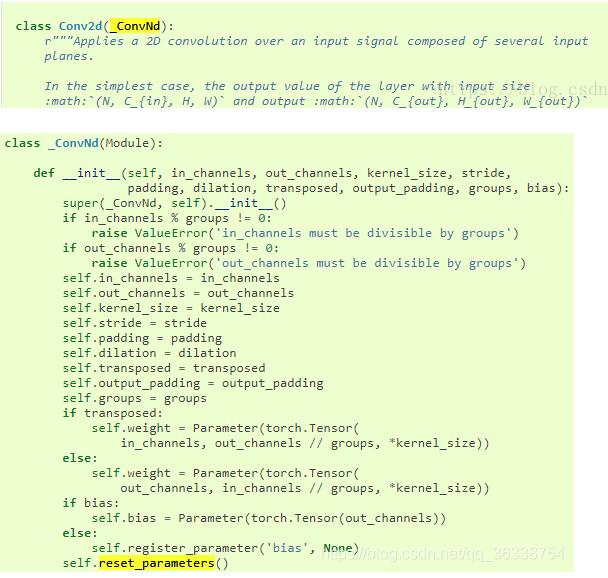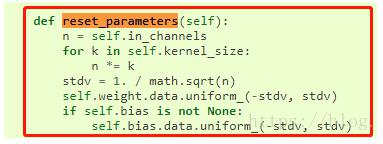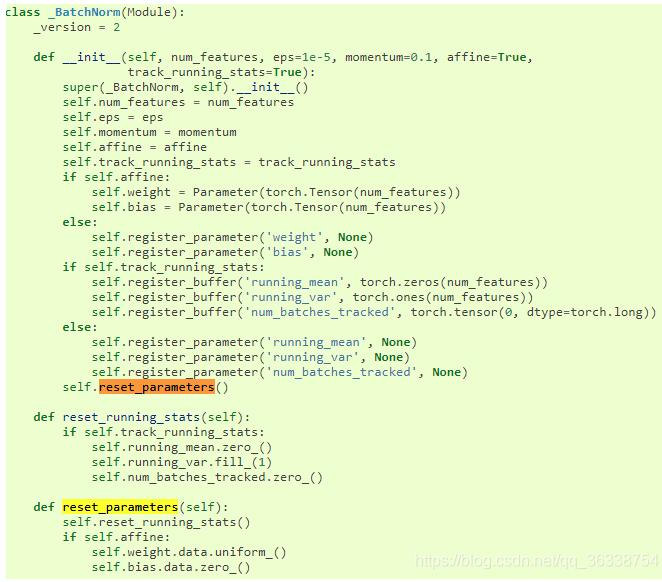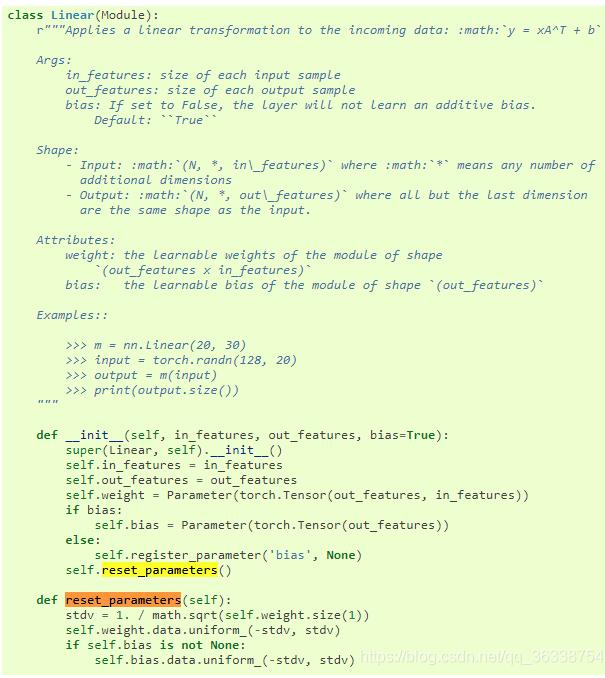# -*- coding: utf-8 -*-
"""
Created on 2019
@author: fancp
"""
import torch
import torch.nn as nn
w = torch.empty(3,5)
#1.均匀分布 - u(a,b)
#torch.nn.init.uniform_(tensor, a=0.0, b=1.0)
print(nn.init.uniform_(w))
# =============================================================================
# tensor([[0.9160, 0.1832, 0.5278, 0.5480, 0.6754],
# [0.9509, 0.8325, 0.9149, 0.8192, 0.9950],
# [0.4847, 0.4148, 0.8161, 0.0948, 0.3787]])
# =============================================================================
#2.正态分布 - N(mean, std)
#torch.nn.init.normal_(tensor, mean=0.0, std=1.0)
print(nn.init.normal_(w))
# =============================================================================
# tensor([[ 0.4388, 0.3083, -0.6803, -1.1476, -0.6084],
# [ 0.5148, -0.2876, -1.2222, 0.6990, -0.1595],
# [-2.0834, -1.6288, 0.5057, -0.5754, 0.3052]])
# =============================================================================
#3.常数 - 固定值 val
#torch.nn.init.constant_(tensor, val)
print(nn.init.constant_(w, 0.3))
# =============================================================================
# tensor([[0.3000, 0.3000, 0.3000, 0.3000, 0.3000],
# [0.3000, 0.3000, 0.3000, 0.3000, 0.3000],
# [0.3000, 0.3000, 0.3000, 0.3000, 0.3000]])
# =============================================================================
#4.全1分布
#torch.nn.init.ones_(tensor)
print(nn.init.ones_(w))
# =============================================================================
# tensor([[1., 1., 1., 1., 1.],
# [1., 1., 1., 1., 1.],
# [1., 1., 1., 1., 1.]])
# =============================================================================
#5.全0分布
#torch.nn.init.zeros_(tensor)
print(nn.init.zeros_(w))
# =============================================================================
# tensor([[0., 0., 0., 0., 0.],
# [0., 0., 0., 0., 0.],
# [0., 0., 0., 0., 0.]])
# =============================================================================
#6.对角线为 1,其它为 0
#torch.nn.init.eye_(tensor)
print(nn.init.eye_(w))
# =============================================================================
# tensor([[1., 0., 0., 0., 0.],
# [0., 1., 0., 0., 0.],
# [0., 0., 1., 0., 0.]])
# =============================================================================
#7.xavier_uniform 初始化
#torch.nn.init.xavier_uniform_(tensor, gain=1.0)
#From - Understanding the difficulty of training deep feedforward neural networks - Bengio 2010
print(nn.init.xavier_uniform_(w, gain=nn.init.calculate_gain('relu')))
# =============================================================================
# tensor([[-0.1270, 0.3963, 0.9531, -0.2949, 0.8294],
# [-0.9759, -0.6335, 0.9299, -1.0988, -0.1496],
# [-0.7224, 0.2181, -1.1219, 0.8629, -0.8825]])
# =============================================================================
#8.xavier_normal 初始化
#torch.nn.init.xavier_normal_(tensor, gain=1.0)
print(nn.init.xavier_normal_(w))
# =============================================================================
# tensor([[ 1.0463, 0.1275, -0.3752, 0.1858, 1.1008],
# [-0.5560, 0.2837, 0.1000, -0.5835, 0.7886],
# [-0.2417, 0.1763, -0.7495, 0.4677, -0.1185]])
# =============================================================================
#9.kaiming_uniform 初始化
#torch.nn.init.kaiming_uniform_(tensor, a=0, mode='fan_in', nonlinearity='leaky_relu')
#From - Delving deep into rectifiers: Surpassing human-level performance on ImageNet classification - HeKaiming 2015
print(nn.init.kaiming_uniform_(w, mode='fan_in', nonlinearity='relu'))
# =============================================================================
# tensor([[-0.7712, 0.9344, 0.8304, 0.2367, 0.0478],
# [-0.6139, -0.3916, -0.0835, 0.5975, 0.1717],
# [ 0.3197, -0.9825, -0.5380, -1.0033, -0.3701]])
# =============================================================================
#10.kaiming_normal 初始化
#torch.nn.init.kaiming_normal_(tensor, a=0, mode='fan_in', nonlinearity='leaky_relu')
print(nn.init.kaiming_normal_(w, mode='fan_out', nonlinearity='relu'))
# =============================================================================
# tensor([[-0.0210, 0.5532, -0.8647, 0.9813, 0.0466],
# [ 0.7713, -1.0418, 0.7264, 0.5547, 0.7403],
# [-0.8471, -1.7371, 1.3333, 0.0395, 1.0787]])
# =============================================================================
#11.正交矩阵 - (semi)orthogonal matrix
#torch.nn.init.orthogonal_(tensor, gain=1)
#From - Exact solutions to the nonlinear dynamics of learning in deep linear neural networks - Saxe 2013
print(nn.init.orthogonal_(w))
# =============================================================================
# tensor([[-0.0346, -0.7607, -0.0428, 0.4771, 0.4366],
# [-0.0412, -0.0836, 0.9847, 0.0703, -0.1293],
# [-0.6639, 0.4551, 0.0731, 0.1674, 0.5646]])
# =============================================================================
#12.稀疏矩阵 - sparse matrix
#torch.nn.init.sparse_(tensor, sparsity, std=0.01)
#From - Deep learning via Hessian-free optimization - Martens 2010
print(nn.init.sparse_(w, sparsity=0.1))
# =============================================================================
# tensor([[ 0.0000, 0.0000, -0.0077, 0.0000, -0.0046],
# [ 0.0152, 0.0030, 0.0000, -0.0029, 0.0005],
# [ 0.0199, 0.0132, -0.0088, 0.0060, 0.0000]])
# =============================================================================





